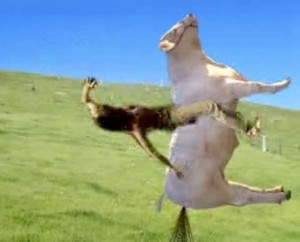Caution is the word for now from an Alberta intestinal health research groupe on products claimed to have prebiotic or probiotic activity to promote health benefits for people and livestock.
 Use of these products won’t harm cattle or people. The worst that could happen from a production standpoint is that they will increase costs with no benefit to the cattle, says Dr. Doug Inglis, a research scientist at Ag Canada’s Lethbridge Research Centre and adjunct professor with University of Calgary Veterinary Medicine.
Use of these products won’t harm cattle or people. The worst that could happen from a production standpoint is that they will increase costs with no benefit to the cattle, says Dr. Doug Inglis, a research scientist at Ag Canada’s Lethbridge Research Centre and adjunct professor with University of Calgary Veterinary Medicine.
He’s not nixing the potential merit of prebiotics and probiotics to provide health benefits. In fact, that’s the very question the research group is studying. It’s just that at this point in time there’s not enough scientific evidence to validate the general claims on most products, let alone make specific claims. That’s largely because our basic understanding of how probiotics and prebiotics impart health benefits is missing.
General claims are usually vague and oftentimes misleading statements about supporting gastrointestinal health. Given that intestinal health has a systemic effect on overall health, some companies extend claims to boosting the immune system, relieving stress and depression, having anti-inflammatory properties, improving glucose tolerance and reducing upper-respiratory tract infections. Products for livestock may claim that they enhance the immune system, improve digestive health, maintain or improve intestinal integrity and barrier function, increase feed efficiency and promote growth.
What you want to see on a product are specific claims — what to expect and why — for instance, the reduction in the number of specific pathogens (salmonella, typhimurium and/or E. coli O157:H7) as a result of having to compete against probiotic bacteria, Inglis explains.
Other modes of action commonly believed but not fully supported by science include directly fighting off harmful bacteria, improving the barrier function of the intestinal wall to bar harmful bacteria, stimulating immune function, reducing inflammation, and producing a growth substance.
“Another concern is that almost all of the science on prebiotics and probiotics has been done in monogastrics so we are really uncertain if there is a health benefit to ruminants,” he adds. Researchers have only touched the tip of the iceberg when it comes to understanding the activity of prebiotics and probiotics in the complex, diverse ruminant digestive system.
